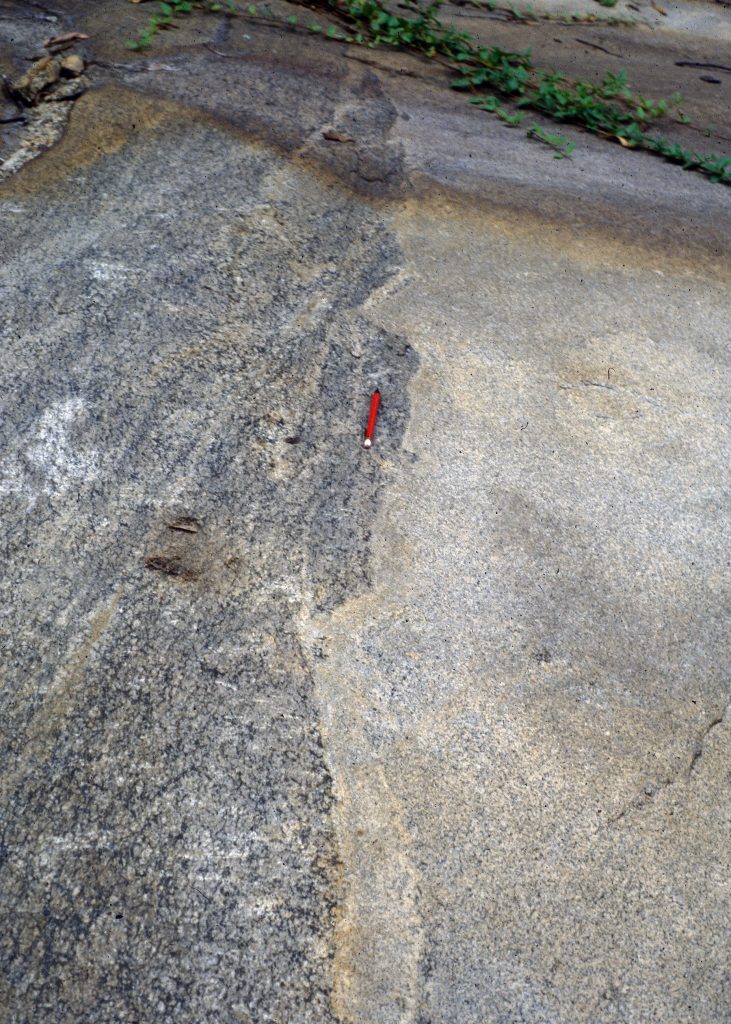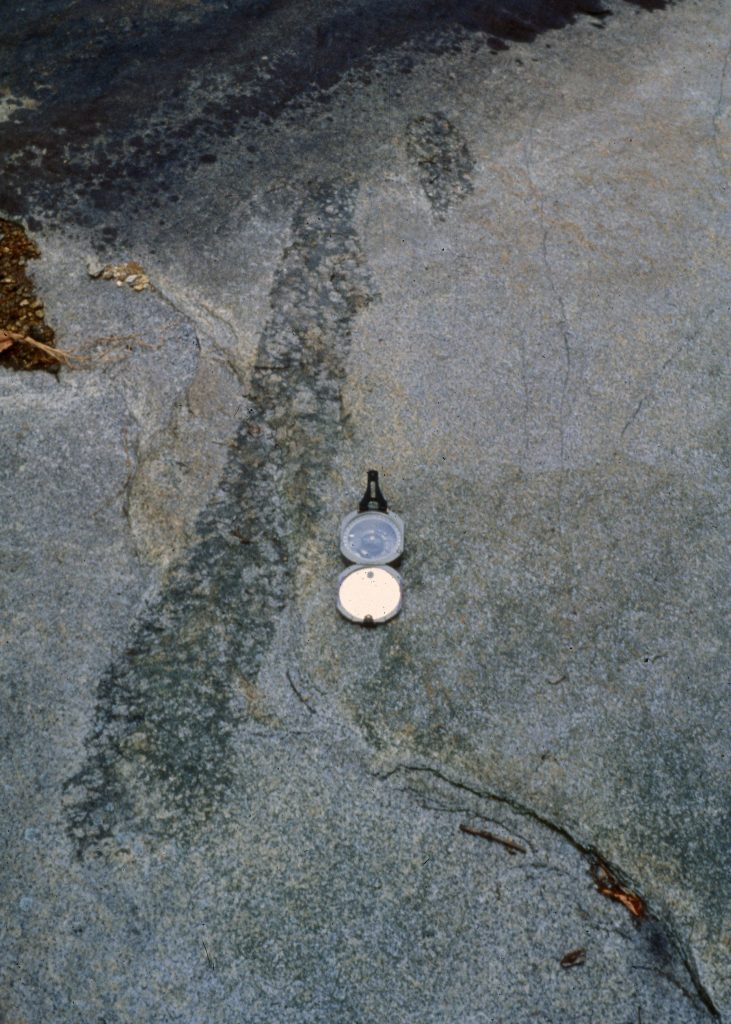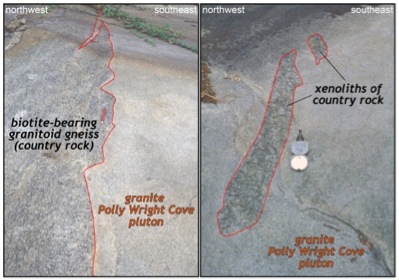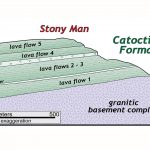When large quantities of magma intrude and solidify in the Earth’s crust they form bodies of intrusive igneous rock known as plutons. The featured image nicely illustrates the edge (geologic contact) of a granitic pluton in the Blue Ridge Mountains of central Virginia.

Exposed geologic contact between ~1 billion year old granitic gneiss of the Blue Ridge basement complex (left) and the 706 ± 4 million year old granite of the Polly Wright Cove pluton (right).
The granite is part of the 706 ± 4 million year old Polly Wright Cove pluton that intruded into older rocks, ~1.0 to 1.1 billion year old granitoid gneisses, of the Blue Ridge basement complex. The Polly Wright Cove pluton occupies an area of ~9 km2 in Nelson County, about 5 km north of Lovingston.
Geologic map of the Polly Wright Cove pluton in Nelson County, Virginia (from Bailey and Tollo, 1998)
Prior to the intrusion of the Polly Wright Cove pluton, the space into which the pluton would intrude was occupied with older rocks (known as the country rock). What processes worked to “create the space” into which the Polly Wright Cove magma would intrude and crystallize?
Did the magma wedge apart the country rock? Or perhaps the hot buoyant magma rose upward while the cooler country rock sank deeper into the crust, by a process similar to what happens in lava lamps?
The Polly Wright Cove pluton consists of two varieties of granite. The margins of the pluton are composed of fine- to medium-grained biotite granite that is variably foliated with aligned biotite and plagioclase phenocrysts. The interior of the pluton consists a of younger massive (unfoliated) leucogranite
Detailed geologic mapping of the Polly Wright Cove pluton demonstrates that it contains inclusions (xenoliths) of the older country rock completely surrounded by granite. Some of the inclusions are hundreds of meters in length (discernible on the geologic map), whereas others are 10s of cm in length. Nearly all of the xenoliths are elongate in two-dimensions (with aspect ratios from 3:1 to 25:1). The long axes of xenoliths are always oriented northeast-southwest, and parallel to the overall shape of the Polly Wright Cove pluton.
Sheet-like projections of granite intrude the country rock at the both northeastern and southeastern ends of the Polly Wright Cove pluton. Extensional ductile faults zones (high-strain zones) are localized in these regions as well.
Bailey and Tollo (1998) interpreted the Polly Wright Cove pluton to have formed as a series of sheeted dikes intruded into the Blue Ridge country rocks during a period of crustal extension. As dikes coalesced the pluton grew. Elongate blocks of country rock were caught between dikes and completely surrounded by the magma. Extensional ductile fault zones created dilational voids which further enhanced magma emplacement. The younger and massive leucogranite at the center of the pluton did not form as dikes and was perhaps emplaced by different mechanisms such as stoping or ballooning.
For Further Reading:
Bailey, C.M. and Tollo, R.P., 1998, Late Neoproterozoic extension-related magma emplacement in the Central Appalachians: an example from the Polly Wright Cove Pluton: Journal of Geology, v. 106, p. 347-359.




